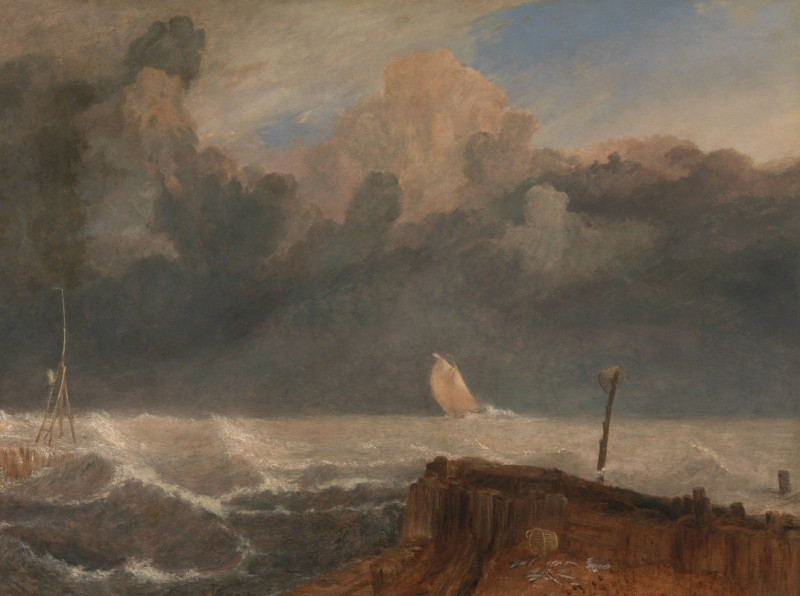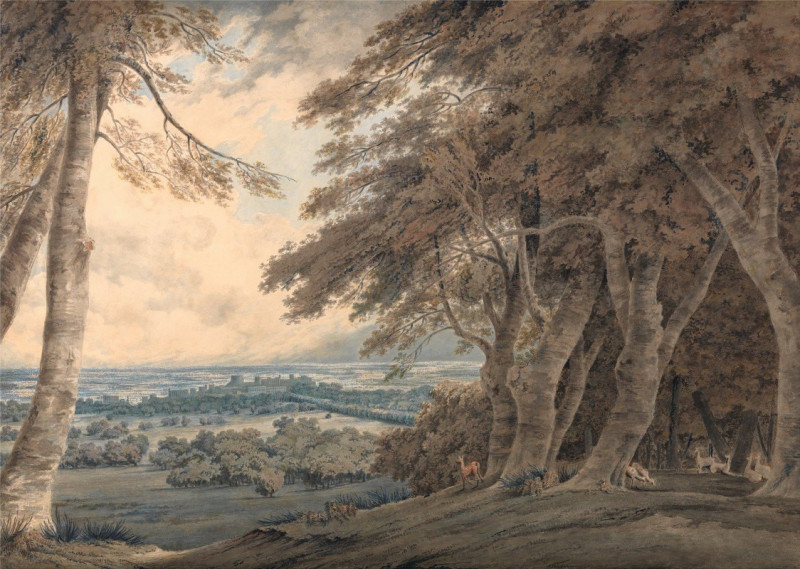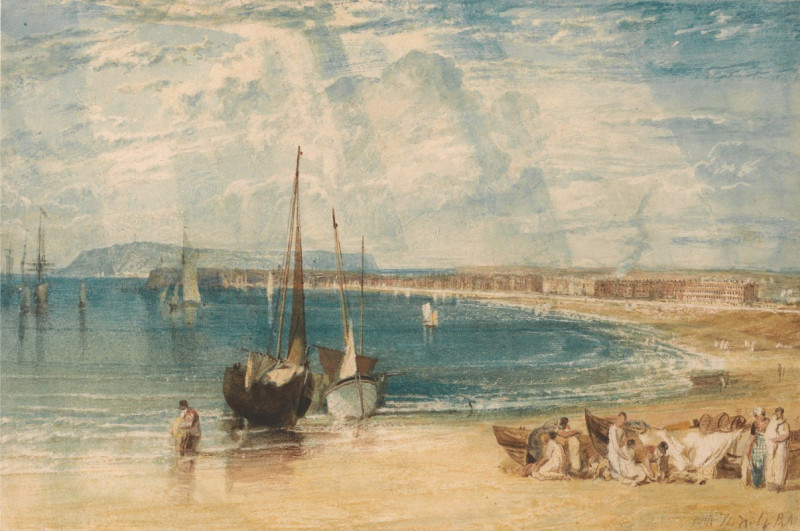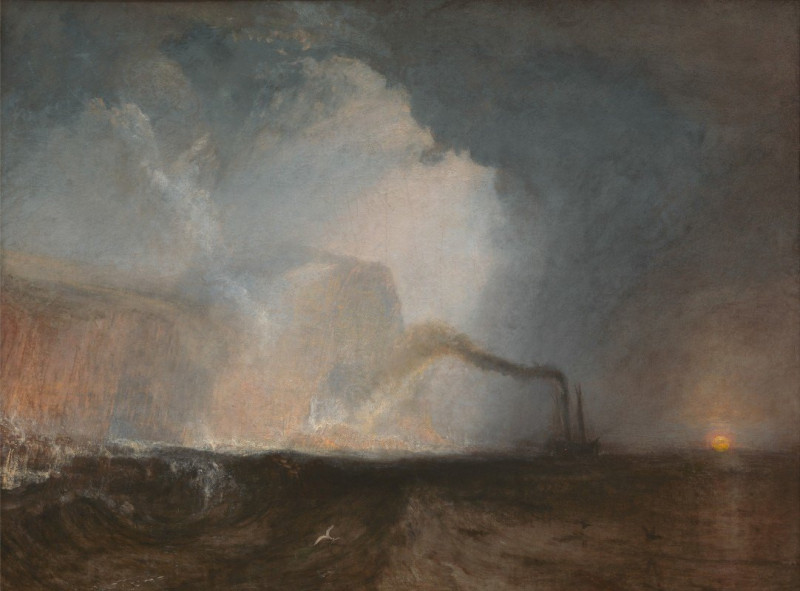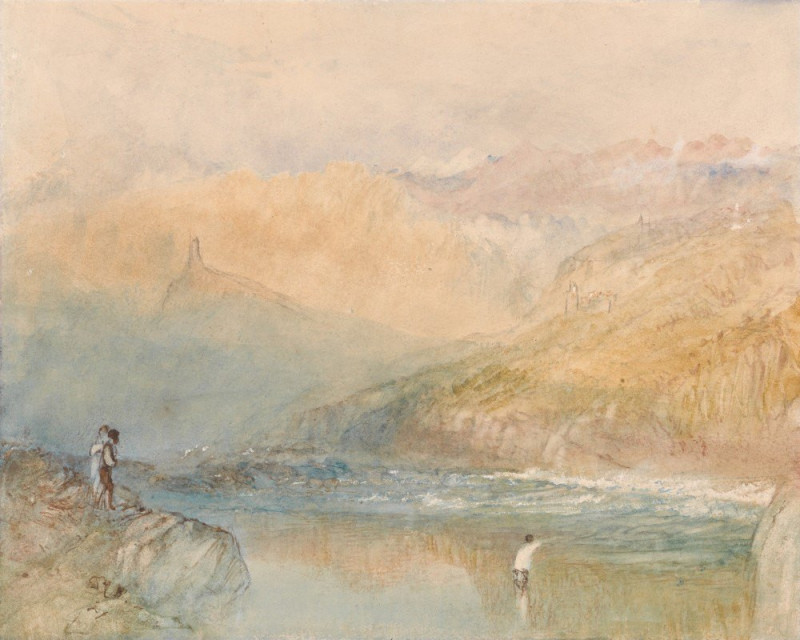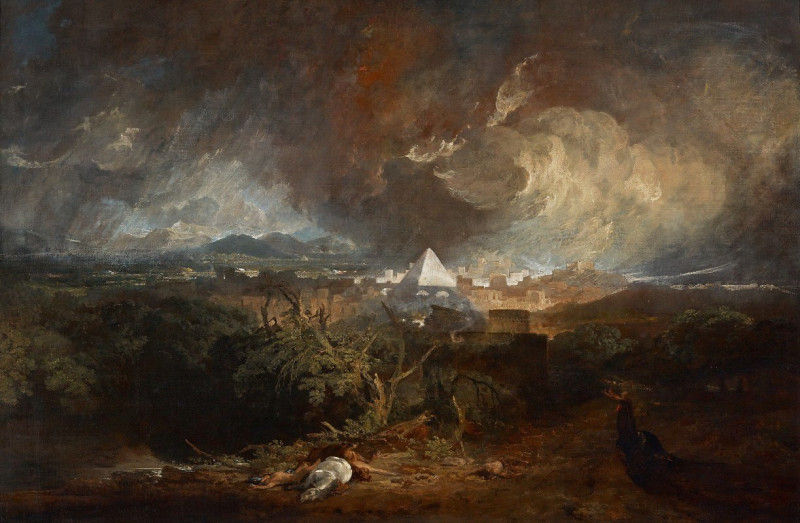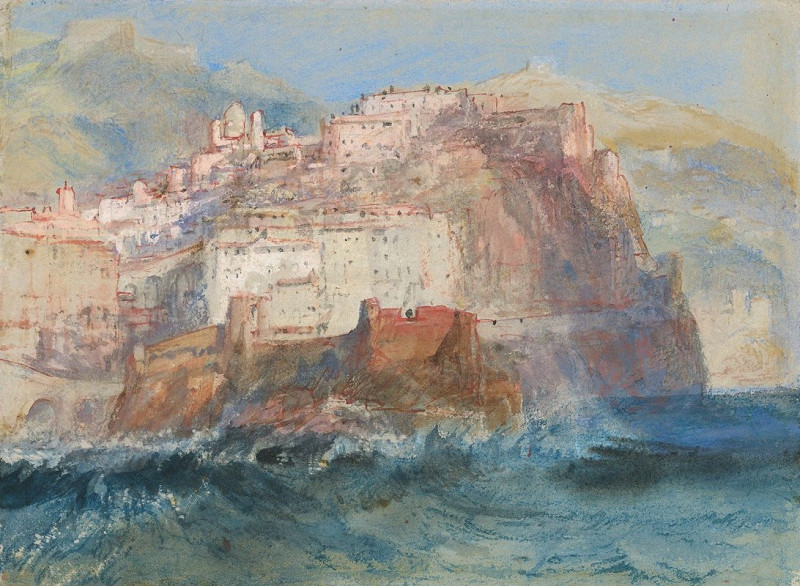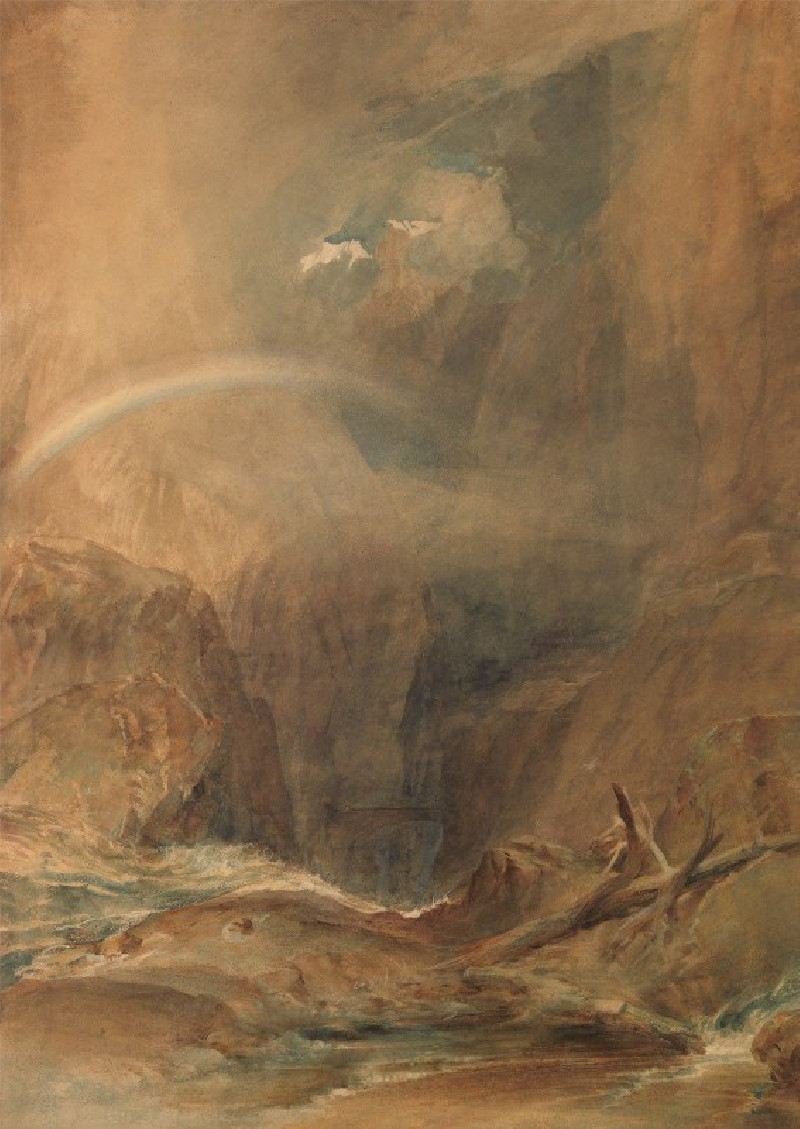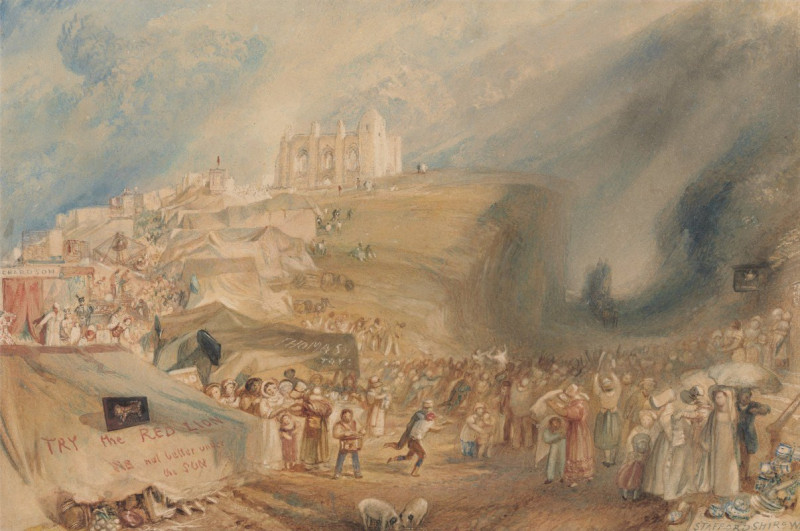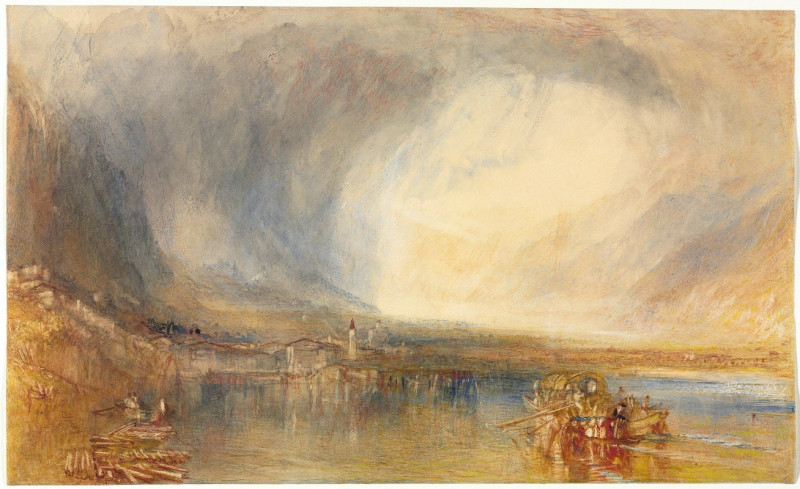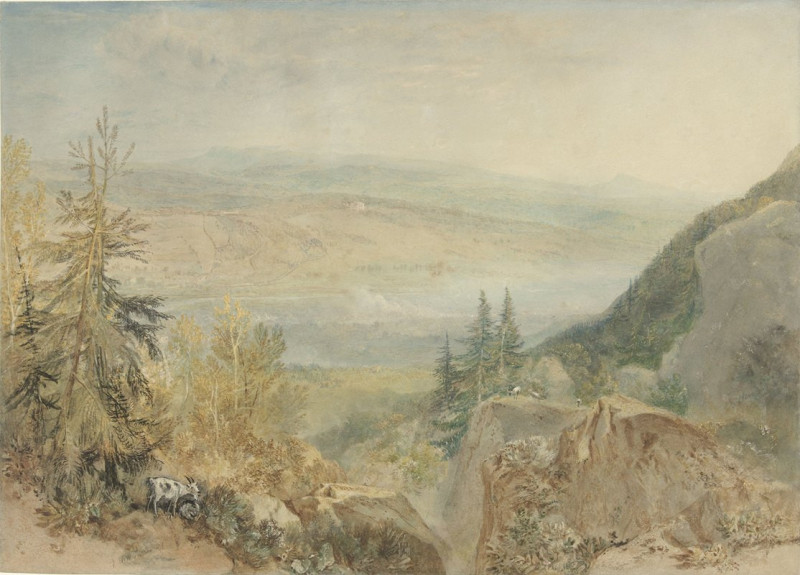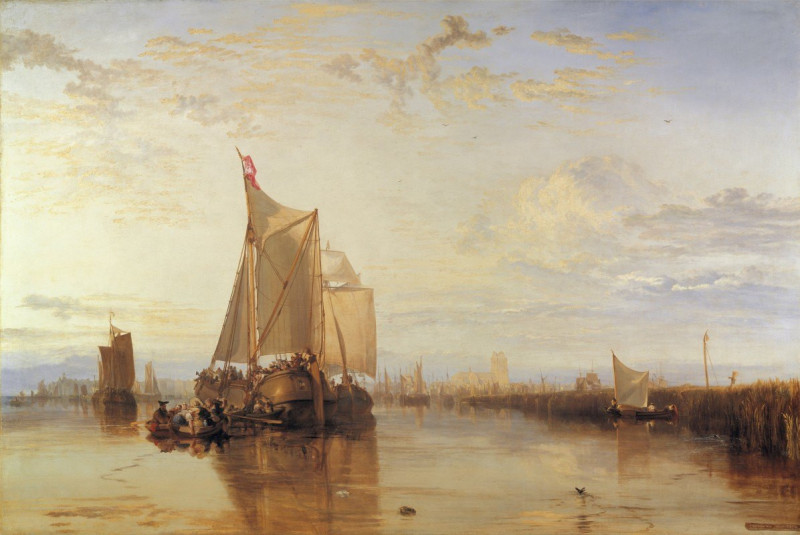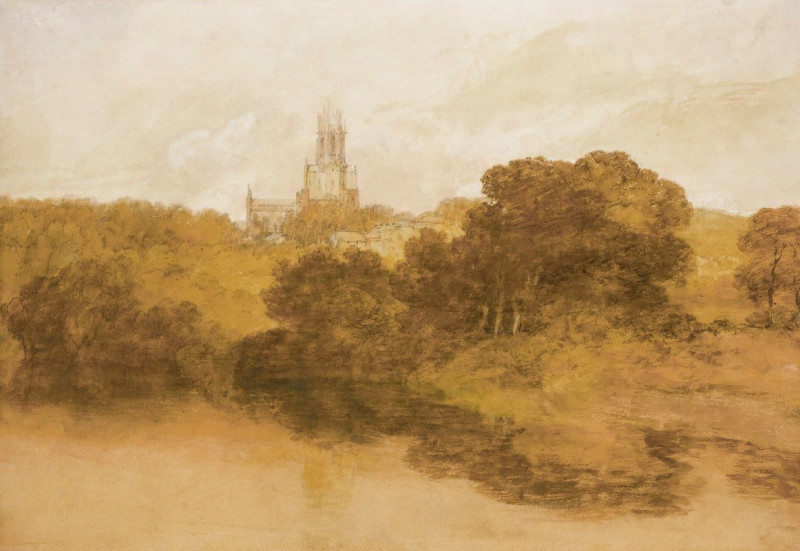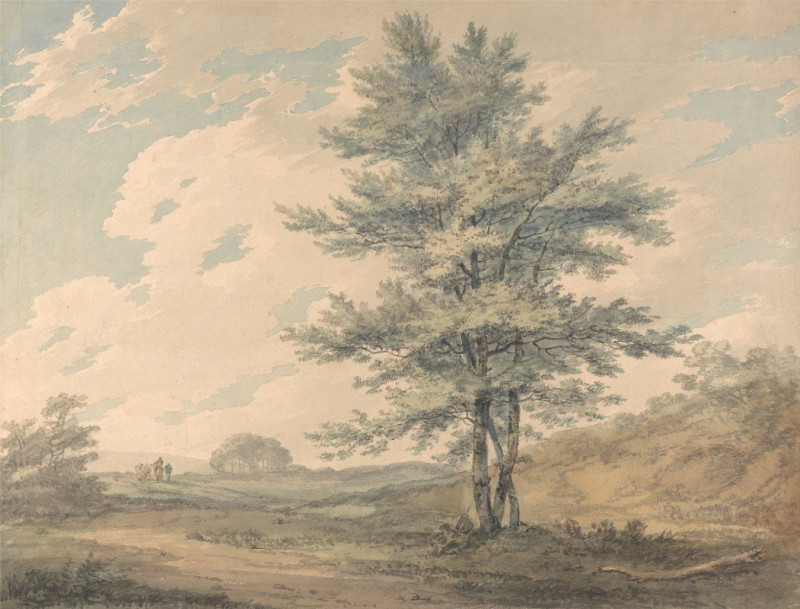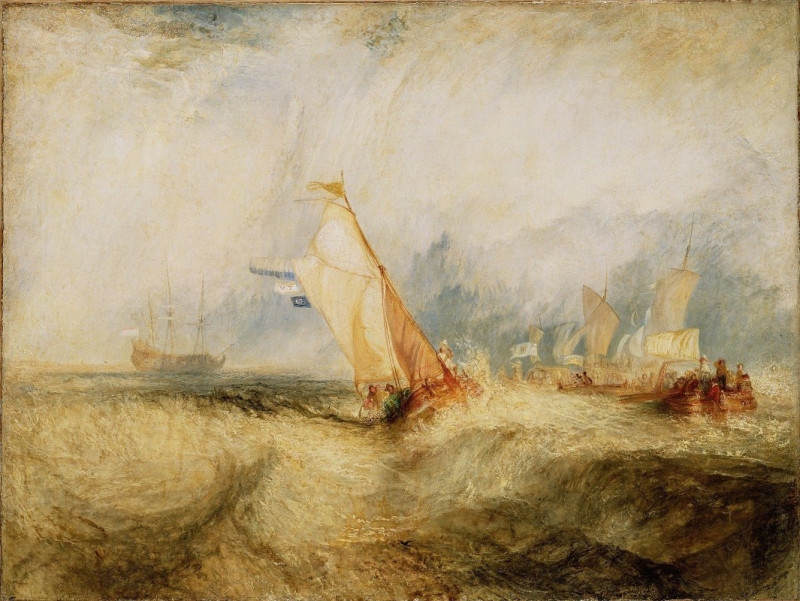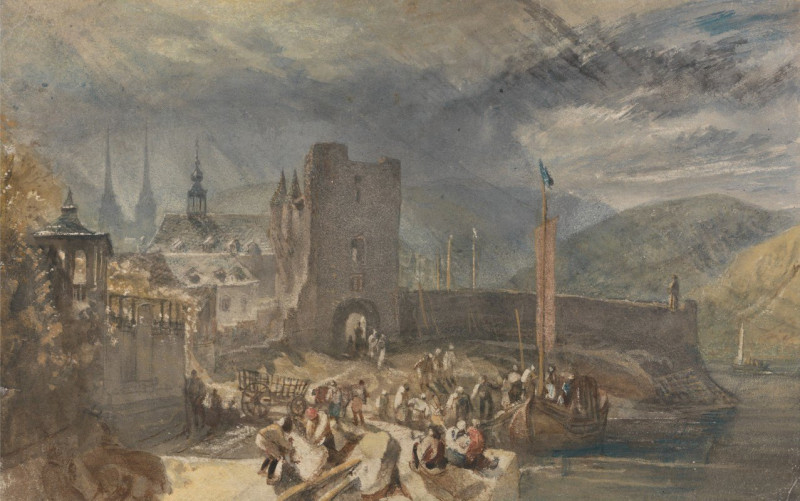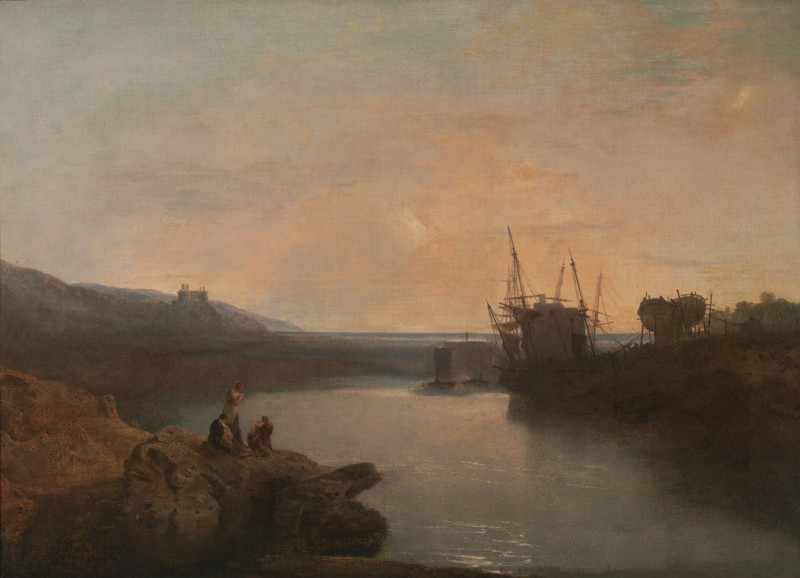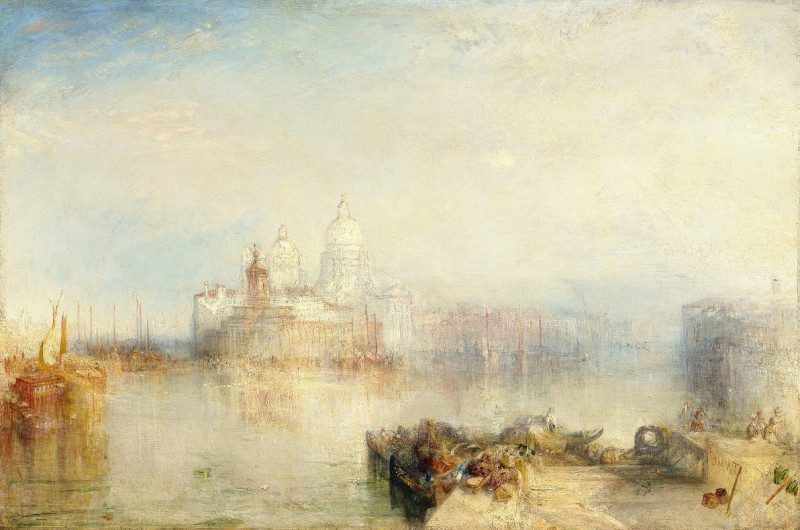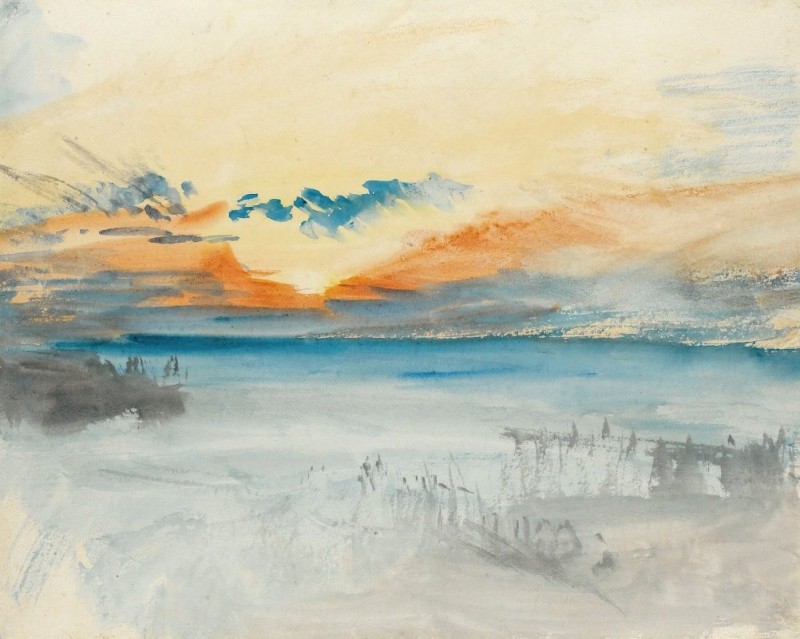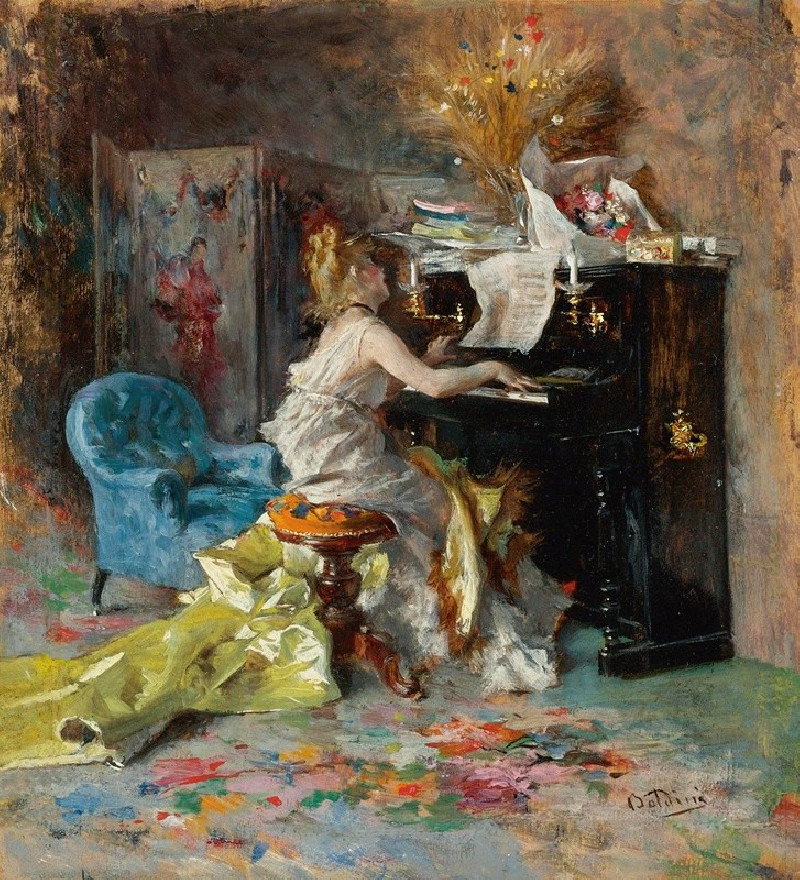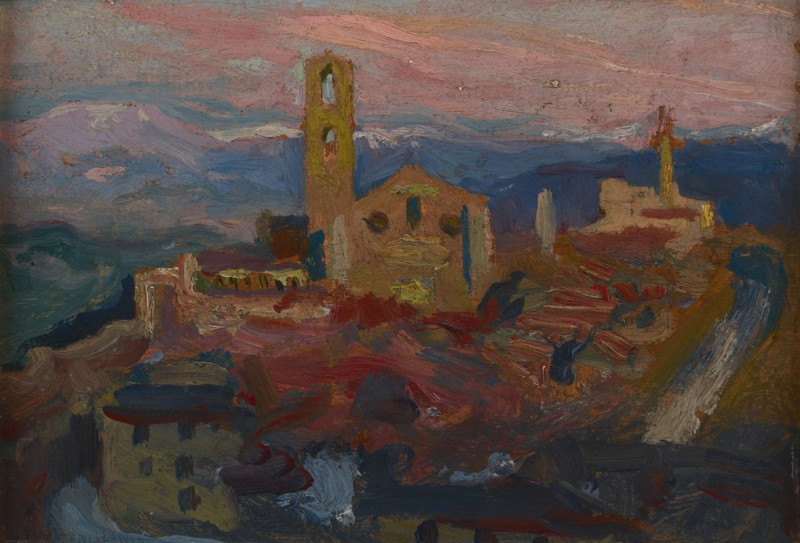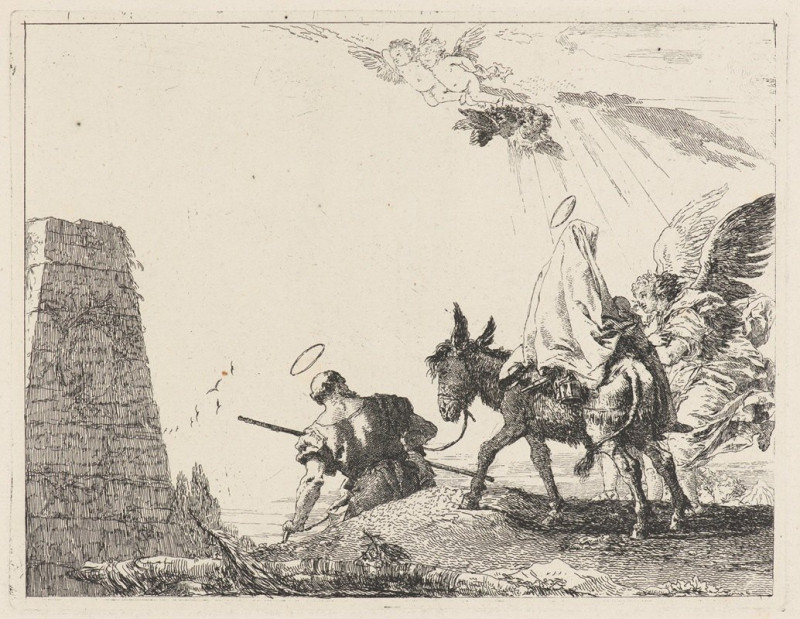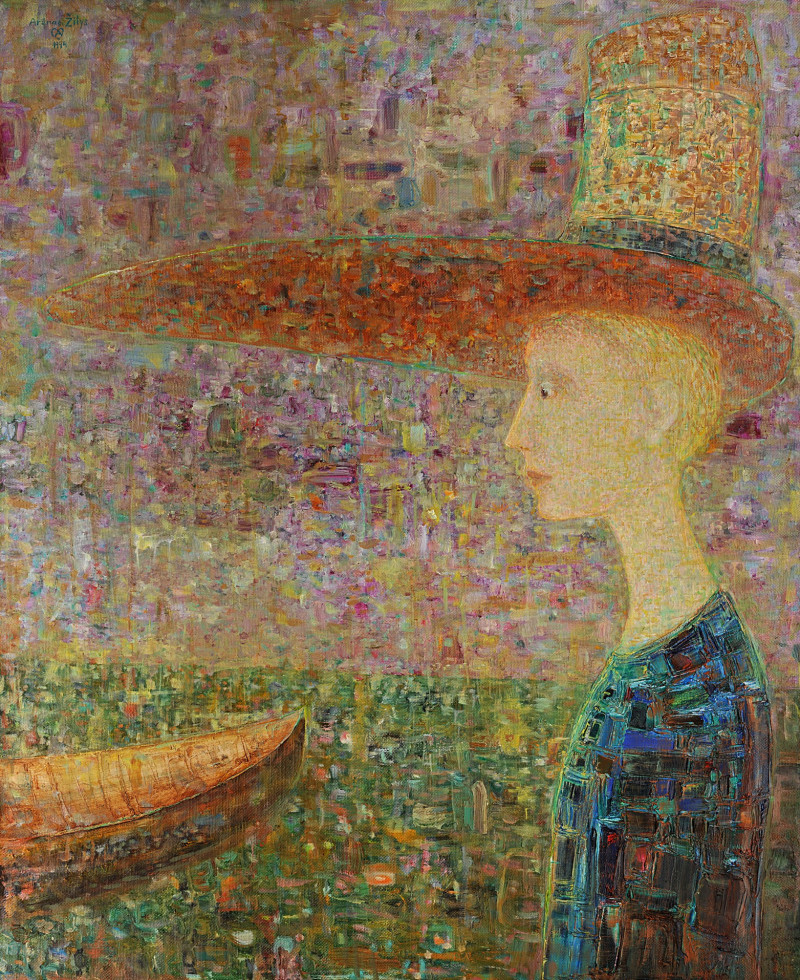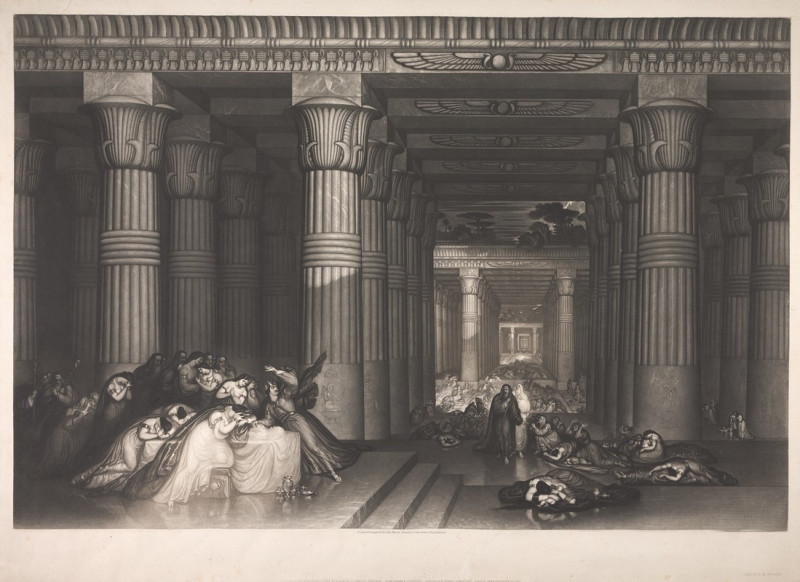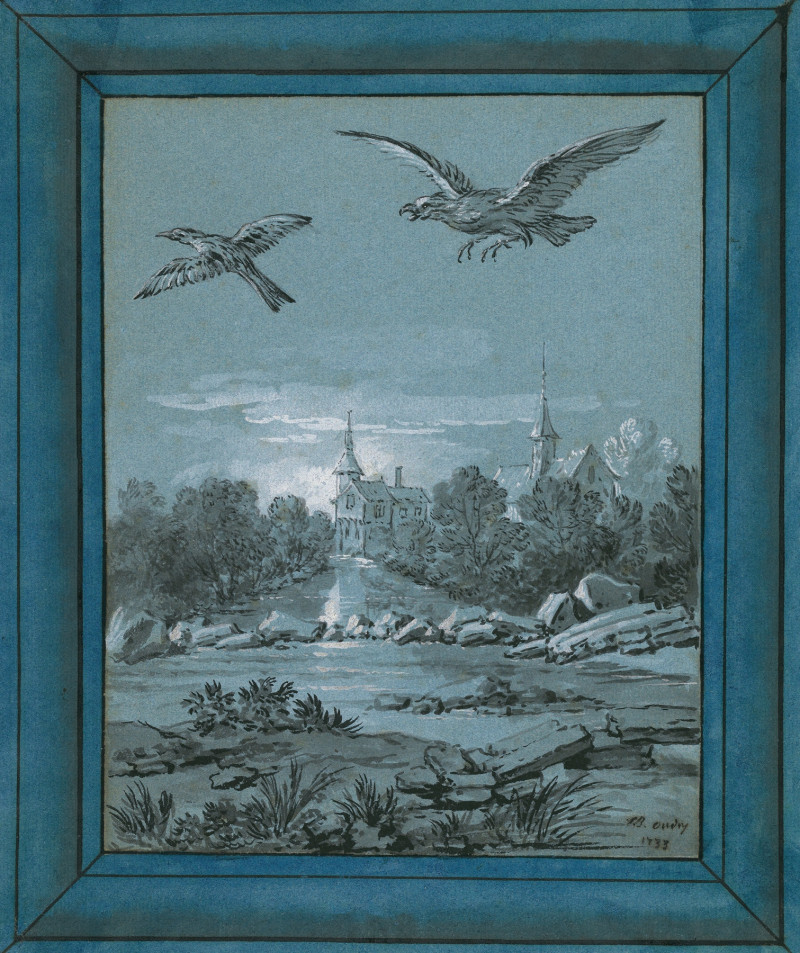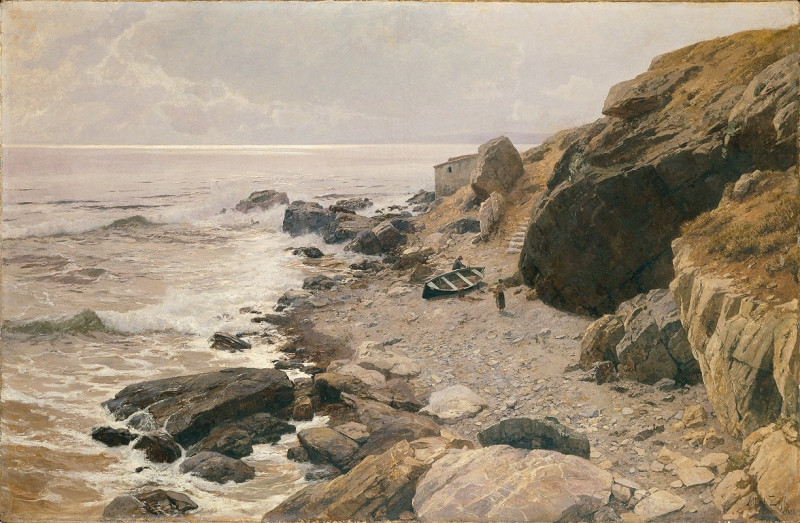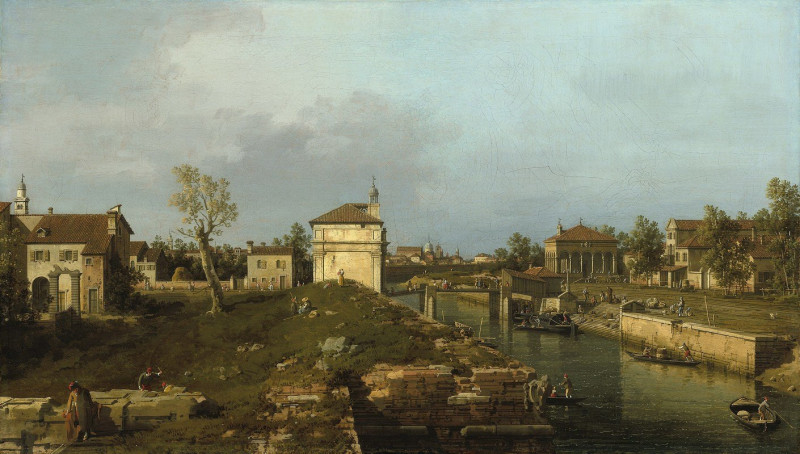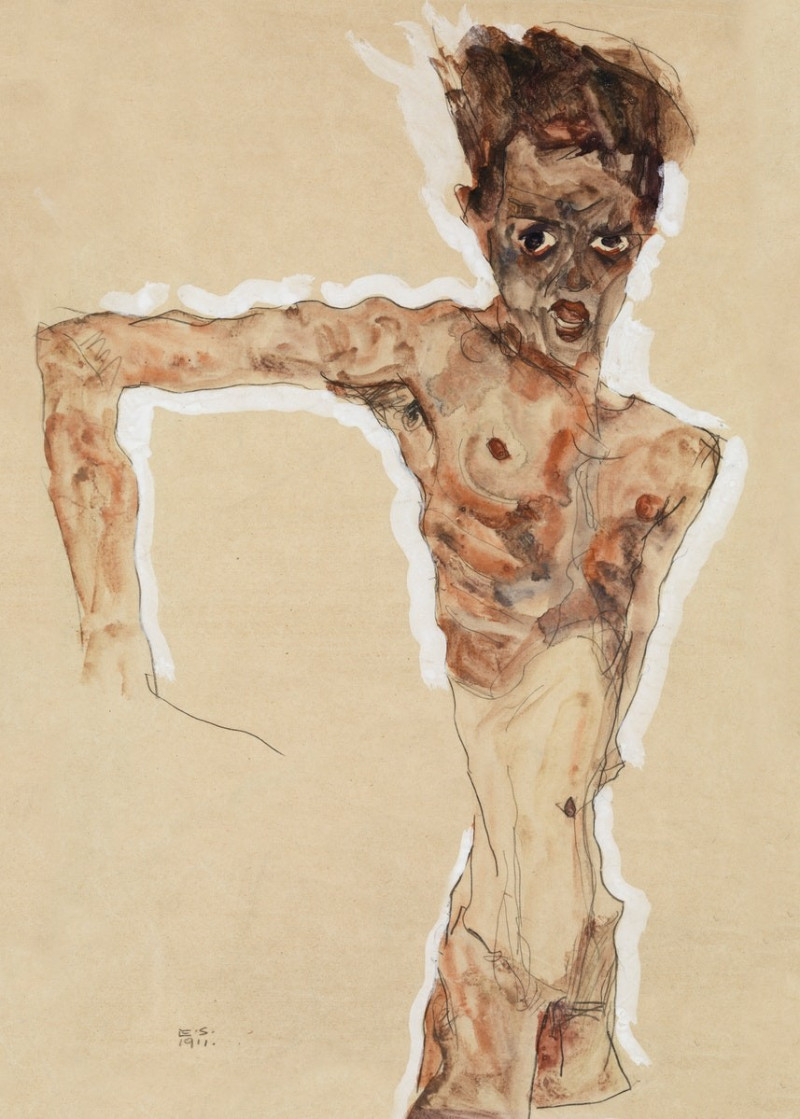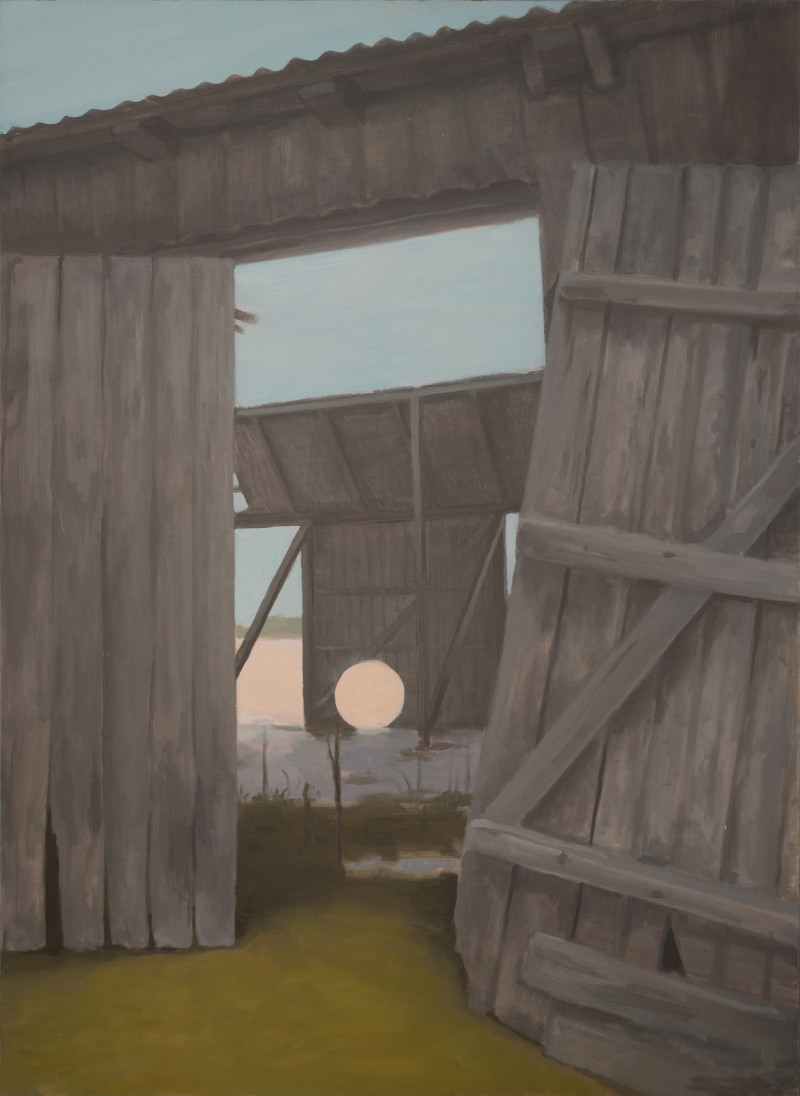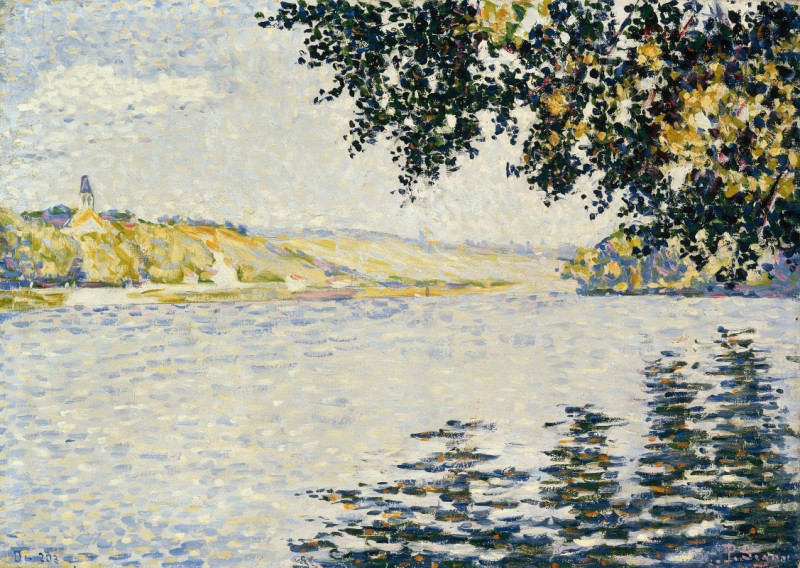Venice – The Dogana and San Giorgio Maggiore (1834)
Technique: Giclée quality print
Recommended by our customers
More about this artwork
This luminous depiction of Venice captures the serene yet bustling atmosphere of one of the world’s most enchanting cities. Painted in 1834 by the illustrious British artist Joseph Mallord William Turner, "Venice – The Dogana and San Giorgio Maggiore" is an exemplary showcase of Turner’s mastery in harnessing light and color to convey mood and atmosphere.The painting presents a view from the water, featuring the Dogana da Mar (Sea Customs House) on the right-hand side and the majestic church of San Giorgio Maggiore in the distance. The foreground of the composition is animated with a myriad of boats, ranging from gondolas gently rowed by gondoliers to larger sailing vessels bustling with activity. This marine parade reflects the vibrant commerce and life of Venice, where the sea is both a pathway and a central character in its daily drama.Turner’s use of a light palette bathes the scene in a soft, ethereal glow, suggesting the early hours of morning with hints of pink and gold in the sky. Meanwhile, the architectural details of the buildings are rendered with delicate precision, balanced perfectly against the fluid, almost impressionistic treatment of the water and sky. This interplay of detailed structure and atmospheric effect is a testament to Turner’s innovative approach, which would later influence the Impressionist movement."Venice – The Dogana and San Giorgio Maggiore" is not just a geographical depiction, but a visual symphony of light, color, and motion, encapsulating the timeless allure of Venice.
Delivery
Returns
Joseph Mallord William Turner RA, known in his time as William Turner, was an English Romantic painter, printmaker and watercolourist. He is known for his expressive colourisations, imaginative landscapes and turbulent, often violent marine paintings. He left behind more than 550 oil paintings, 2,000 watercolours, and 30,000 works on paper. He was championed by the leading English art critic John Ruskin from 1840, and is today regarded as having elevated landscape painting to an eminence rivalling history painting.


